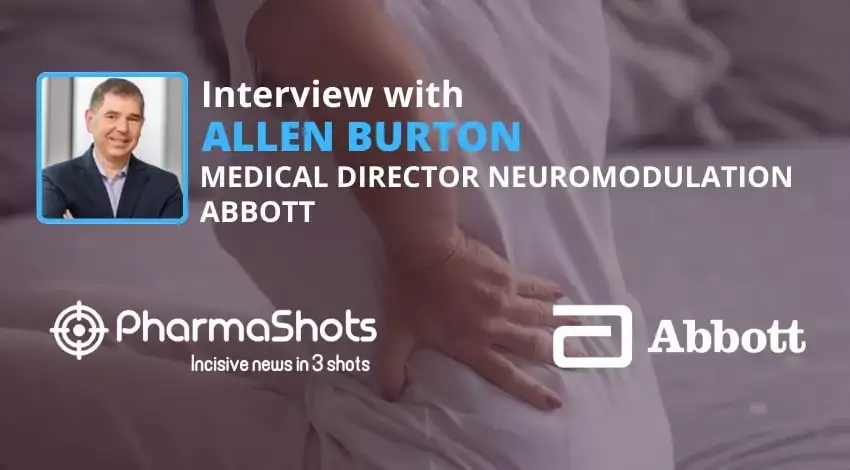Jonathan Wall, Co-founder & Interim CSO at Attralus Share Insights from its New Data Presented across its Amyloidosis Portfolio at the 2022 International Symposium on Amyloidosis
Shots:
- Jonathan spoke about the data presented by Attralus at the XVIII International Symposium on Amyloidosis (ISA) as both oral and poster presentations
- Jonathan also talked about its lead candidate, AT-01. He discussed the study design of the P-I/II clinical trial evaluating AT-01
- The interview highlights Attralus vision to develop innovative medicines to improve the lives of patients with systemic amyloidosis
Smriti: Tell us about the details of AT-01 (MOA, ROA, formulations, etc.)
Jonathan Wall: AT-01 (iodine (I-124) evuzamitide) is a synthetic 45 amino acid peptide that is highly positively charged and possesses a single site for the incorporation of radioactive iodine-124, making it suitable for detection by PET/CT imaging following intravenous injection. The peptide binds all types of amyloid evaluated to date, including transthyretin (ATTR), light chain (AL), leukocyte chemotactic factor 2 (ALECT2) associated amyloidoses, as well as rarer forms of the disease. Due to its high positive charge, radioiodinated AT-01 binds specifically to amyloid through extensive charge-charge interactions with the highly charged sugar residues (glycosaminoglycans) found in all amyloid deposits, in addition to the amyloid fibrils. Thus, AT-01 utilizes Attralus’ pan-amyloid peptide technology coupled with iodine-124 to generate a novel radiotracer that can be used to diagnose and quantify systemic amyloidosis by PET/CT imaging. In addition, the use of iodine 124 also enables imaging amyloid in all key organs.
Smriti: Would you please give our readers some insights into the potential of AT-01 to provide an easier diagnosis of systemic amyloidosis?
Jonathan Wall: Currently, the diagnosis of amyloidosis is a long, complex process, often delayed by years. Patients often see numerous physicians over many years before a suspicion of amyloidosis is considered and the appropriate test ordered. The most widely used method to detect amyloid remains tissue or organ specific biopsy (e.g., abdominal fat, kidney, or heart) followed by Congo red staining of the tissues. In addition to being an invasive procedure, and subject to sampling errors, interpreting Congo red-stained tissue sections is not trivial. Imaging with technetium-99m-labeled PYP, a bone seeking agent, is being increasingly used to diagnose cardiac ATTR in patients for whom AL has been ruled out, but there remains an issue with frequent false positives and questions about the ability to detect early disease. Moreover, 99mTc-PYP does not directly bind amyloid, but rather calcium deposits, and cannot be used to accurately diagnose patients with AL amyloidosis or other forms of the disease. In addition, there are currently no imaging agents that can detect all the organs involved in systemic amyloidosis. Thus, there remains a critical need for a non-invasive diagnostic that is capable of (i) imaging many diverse types of amyloid, including ATTR and AL, and (ii) imaging amyloid deposits in different organs, including heart, kidney, and other abdominothoracic organs iii) detecting early disease. Initial clinical data from the Phase 1/2 AT-01 study suggests that it can fulfill these criteria. In addition, PET/CT imaging is an inherently quantitative modality, which affords the ability to monitor changes in amyloid load in patients by measuring changes in organ-specific uptake of AT-01.
Smriti: Compared to the previous mode of diagnosis how does the development of AT-01 helps the diagnosis of amyloidosis?
Jonathan Wall: At this time, there are no FDA-approved imaging agents for the non-invasive detection of systemic amyloidosis. The gold standard for the diagnosis remains Congo red staining of a tissue biopsy – either organ or abdominal fat pad (where there may be amyloid in the microvasculature). The only exception to the need for biopsy is the use of PYP imaging for cardiac ATTR cardiac, once AL is ruled out. However, the majority of patients diagnosed via PYP require a number of other diagnostic tests to ensure the diagnosis is accurate. We anticipate that PET/CT imaging with AT-01 could be used as a first test upon suspicion of amyloidosis. The scan could not only provide data on the presence (or absence) of amyloidosis in a non-invasive technique, but also indicate which organs contain amyloid and provide a quantitative baseline for amyloid burden in each positive organ, which can be monitored longitudinally to assess response to therapy. This wealth of data, heretofore unavailable from a single diagnostic test, could be obtained from a single AT-01 PET/CT scan and may circumvent the need for biopsy and additional imaging studies. In additional, AT-01 has the potential to be a more sensitive test and to detect early disease.
Smriti: Shed some light on the study design of the P-I/II clinical trial evaluating AT-01
Jonathan Wall: The Phase 1/2 trial evaluated the ability of AT-01 to detect abdominothoracic amyloid deposits by PET/CT imaging in patients with diverse types of systemic amyloidosis. The study enrolled a total of 57 subjects, 50 of whom had systemic amyloidosis, two asymptomatic TTR variant carriers, and five who served as healthy volunteers. All subjects received an IV infusion of <2 mg of AT-01 peptide (≤2 mCi [74 MBq]), and images were acquired at 5 hours post injection. Amyloid involvement was assessed for each patient prior to imaging based on observations contained in the patients’ medical record. PET/CT images were reviewed by a single nuclear medicine physician to determine organ-specific uptake and the organ-based sensitivity (positive percent agreement) determined by assessing agreement between clinical findings and AT-01 uptake by imaging. Specificity was similarly assessed in the small cohort of healthy subjects.
Smriti: Please discuss the key highlights of the abstracts presented at the 2022 International Symposium on Amyloidosis (including data for AT-02, AT-03, and AT-04)
Jonathan Wall: Attralus was proud to have eleven presentations at the 2022 International Symposium on Amyloidosis across our pan-amyloid pipeline. We were especially excited to share preclinical data, presented for the first time, on AT-02, our lead pan-amyloid removal therapeutic, demonstrating amyloid reduction in the heart, kidney, liver, and spleen as well as in vivo macrophage-mediated phagocytosis of amyloid fibrils. In addition, we were excited to present preclinical data on AT-04, our amyloid-binding peptibody therapeutic, demonstrating potent binding to all types of systemic amyloidosis, as well as fibrils composed of Aβ (1-40), tau or α-synuclein, which are all associated with neurodegenerative disorders. For AT-01, our diagnostic imaging agent, analysis of data demonstrated excellent cardiac sensitivity (100% in patients with ATTR) and 100% cardiac specificity. The pan-amyloid reactivity of AT-01 was demonstrated by uptake in patients with AL, ATTRv, ATTRwt, ALECT2, AApoA1, ALys and AGel amyloidosis. Finally, preliminary analysis indicated the potential for differentiating ATTR from AL and monitoring amyloid regression using AT-01 PET/CT imaging.
Smriti: How do these data help/be useful for HCP, patients?
Jonathan Wall: Attralus is singularly focused on transforming the lives of amyloidosis patients. There is not currently a reliable pan-amyloid imaging agent that provides a complete view of the disease burden. Current approved treatments focus on reducing new amyloid formation and slowing disease progression, but there is a lack of therapies that can remove existing toxic amyloid and reverse disease.
Data presented at ISA 2022 on behalf of Attralus demonstrate the opportunity to use pan-amyloid removal therapies to bind to multiple types of amyloid and reduce toxic amyloid from key organs, including the heart and kidney. In addition, data presented demonstrated the opportunity to use a novel imaging diagnostic to provide straightforward diagnosis, and potential monitoring of amyloidosis across many types of amyloid and key organs. Ultimately, these data may provide patients and HCPs with
- The ability to detect early disease and to detect disease in patients missed by current diagnostics
- The ability to detect all types of amyloid with a single test
- The ability to detect multiple organs involved in a given patient
- The potential ability to differentiate ATTR from AL
- The ability to quantify amyloid and monitor changes over time with therapy
Smriti: Are there any HCP engagement programs that Attralus will provide for spreading awareness for AT-01
Jonathan Wall: Attralus is proud to take part in an industry collaborative group with the Amyloidosis Research Consortium that has a focus on early detection of the disease. The use of imaging to detect early disease is part of that consortium. In addition, Attralus regularly presents updates on emerging modalities at patient group meetings attended by both patients and physicians. Attralus is also supporting investigator-initiated trials with multiple centers of excellence.
Source: Cleveland Clinic Center for Continuing Education
About the Author:

Jonathan Wall is the Co-founder & Interim CSO at Attralus. He also serves as the Professor at University of Tennessee Medical Center, Knoxville and Head of the Amyloidosis and Cancer Theranostics Program. Jonathan is an internationally known expert in the field of amyloidosis and has worked in the field of amyloidosis for over 25 years.He has over 100 publications and more than 13 issued US patents in this field. His research work was instrumental in the development of multiple antibody-based therapeutics that have undergone clinical development by biotech companies. His lab has received over $10M in NIH grant and contract funding for work that focuses on the development and translation of novel diagnostic and therapeutic reagents for amyloidosis.



